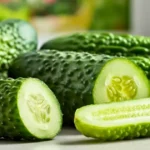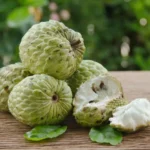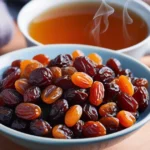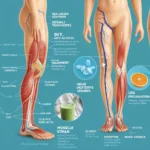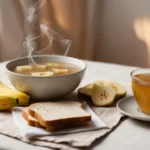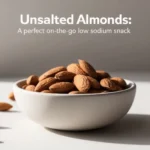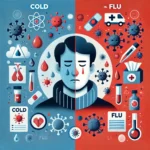High Fiber Foods for Weight Loss. Incorporate high-fiber foods in your diet to aid weight loss. Check out our top 11 list of effective foods rich in fiber to help you achieve your fitness goals.
Are you trying to lose some extra weight but having trouble finding the perfect diet strategy? Including high-fiber foods in your daily meals can assist you in losing weight. These foods help you feel full and satisfied and provide several additional health advantages.
This extensive guide will go through the many types of fiber, how much fiber you need, and its significance in weight loss. Additionally, we’ll introduce you to the best high-fiber foods that are great for losing weight.
High Fiber Foods for Weight Loss
It can be challenging to lose weight, but including high-fiber foods in your diet can help. Fiber is a crucial component that prevents overeating by keeping you full and satisfied for a long time. Additionally, it controls blood sugar levels, enhances digestion, and reduces the risk of diabetes and heart disease.
The Role of Fiber in Weight Loss
An indigestible carbohydrate called fiber bypasses your digestive tract without being absorbed. It takes in water, expands, and turns into a gel-like substance that increases stool volume and encourages regular bowel motions. Additionally, this bulk keeps you full, which lowers your appetite and calorie intake.
What are High-Fiber Foods?
Fiber is a carbohydrate in plant-based foods that the body cannot digest, and it passes through the digestive system undigested, offering the body several advantages. Soluble and insoluble fibers are two different types, and while insoluble fiber does not dissolve in water, soluble fiber does. Both types of fiber are necessary for preserving health.
Variety of Fiber
Soluble and insoluble fibers are two different types. Insoluble fiber bulks up your stool and encourages regular bowel movements, whereas soluble fiber dissolves in water and forms a gel-like material. Both forms of fiber are crucial for maintaining a healthy digestive tract and reaching weight loss objectives.
Fiber: Soluble vs Insoluble
Soluble and insoluble fiber are the two primary forms. The gel-like substance created when soluble fiber dissolves in water can help decrease cholesterol and control blood sugar levels. Contrarily, insoluble fiber aids in promoting regular bowel motions because it does not dissolve in water.
How Much Fiber Do You Need?
Adults should take 25 to 30 grams of fiber daily, but the majority of individuals only get half that much, according to the American Heart Association. Eat more fruits, vegetables, whole grains, nuts, and seeds to improve fiber intake.
11- Best High-Fiber Foods for Weight Loss
1. Beans-
Both soluble and insoluble fiber are abundant in beans, making them the perfect food for shedding pounds. They include a lot of protein, which also helps you feel less hungry.
2. Lentils –
Lentils are a great source of soluble and insoluble fiber, much like beans. They are the perfect food for weight loss because they are also high in protein and low in calories. Lentils are a fantastic source of fiber, plant-based protein, and minerals.
Additionally, low in calories, they can keep you full and happy for a long time. Lentils can be used in dishes as a meat alternative or as an addition to salads, soups, and stews.
3. Berries-
Berries are a delicious snack for weight loss and overall health since they are substantial in fiber and antioxidants. Additionally, they have few calories and are simple to include in snacks or smoothies.
4. Whole grains –
Because they are fiber-rich and complex carbs, whole grains like oats, brown rice, and quinoa are ideal for weight loss. Additionally, they offer all-day energy that is sustained.
5. Avocado –
An excellent and healthful complement to any diet is the avocado. It provides a lot of fiber and good fats; antioxidants, vitamins, and minerals found in abundance in avocados can help to promote general health.
Avocado is a fantastic food for weight loss because it is substantial in fiber and good fats, which can make you feel content and complete. Spreadable and versatile, it can be used in salads and smoothies.
6. Chia seeds-
It contain much soluble fiber and have a 10-fold water absorption capacity. Chia seeds are a great source of fiber, protein, and healthy fats. Chia seeds contain a lot of antioxidants and anti-inflammatory properties. They can be used as a topping for yogurt, salads, smoothies, oatmeal, and other foods.
7. Broccoli –
Broccoli is a fantastic food because it contains a lot of fiber and a few calories for weight loss. It is a nutritious complement to any diet because it contains vitamins and minerals. A cruciferous vegetable rich in fiber, vitamins, and minerals is broccoli. It is a beautiful addition to any diet for losing weight because it is low in calories. Broccoli can be a versatile ingredient in salads, stir-fries, and soups.
8. Sweet potatoes-
Sweet potatoes are an excellent food for losing weight since they are fiber-rich and complex carbs. They may be utilized in various cuisines and loaded with vitamins and minerals. A perfect and nutritious addition to any diet is sweet potatoes. They can help control blood sugar levels since fiber, vitamins, and minerals abound in them. Sweet potatoes are a side dish, baked, roasted, boiled, or chopped and added to salads.
9. Nuts –
Nuts are an excellent food for losing weight since they are high in fiber, protein, and good fats. They are simple to add to salads or incorporate into snacks.
10. Artichokes-
Because they are low in calories and high in fiber, artichokes are an excellent food for losing weight. They are simple to add to a variety of meals and also contain antioxidants.
11. Brussels sprouts –
Brussels sprouts are an excellent food for losing weight since they are low in calories and fiber. They are a nutritious supplement to any diet because they contain vitamins and minerals.
How to Incorporate High-Fiber Foods into Your Diet
Incorporating high-fiber foods into your diet can be easy and delicious. Start by substituting whole grains like brown rice, quinoa, and whole wheat bread for processed grains. Increase the amount of fruits, veggies, nuts, and seeds you eat.
Choosing fruit as a snack instead of processed foods, such as apples, berries, and oranges, is an easy method to enhance your fiber consumption. For an additional boost of fiber, you may also add chia seeds, flax seeds, or nuts to your yogurt or smoothie.
Tips for Incorporating High-Fiber Foods into Your Diet
– Start the day with a high-fiber breakfast:
Select whole-grain products like cereal, oatmeal, or fruit and vegetable smoothies.
– Enhance your meals with more fruits and vegetables:
Put half your plate of fruits and veggies at every meal.
– Choose whole-grain products:
Whole-grain pasta, rice, and white bread varieties should be used instead.
– Snack on high-fiber foods:
Select healthy snacks like fruits, nuts, and seeds.
– Incorporate legumes into your diet:
Protein and fiber content is high in legumes, including beans, lentils, and chickpeas.
– Drink plenty of water:
Fiber absorbs water, so Drinking plenty of water is critical. to prevent constipation.
– Read food labels:
Look for foods high in fiber and choose those with at least 3 grams per serving.
– Use high-fiber foods as substitutes:
Replace high-carb foods such as pasta with zucchini noodles or rice with cauliflower rice.
– Experiment with new recipes:
Look for recipes incorporating high-fiber foods like bean salads or vegetable stir-fries.
–Remember about fiber supplements:
If you cannot get enough fiber from your diet, consider a fiber supplement.
Incorporating high-fiber foods into your diet can provide several health benefits, including regulating the digestive system, reducing the risk of heart disease, controlling blood sugar levels, and maintaining a healthy weight. Applying the advice in this article can help you boost your fiber intake and enhance your general health.
Sample Meal Plans Featuring High-Fiber Foods
Here are three sample meal plans featuring high-fiber foods:
Meal Plan 1
- Breakfast: Oatmeal with sliced banana and chia seeds
- Snack: Apple slices with almond butter
- Lunch: Salad of grilled chicken, quinoa, avocado, and mixed greens
- Snacks: Carrot sticks with hummus
- Dinner: Baked salmon with roasted broccoli and sweet potato
– 2
- Breakfast: Greek yogurt with berries and granola
- Snack: Pear slices with walnuts
- Lunch: Turkey wrap with whole wheat tortilla, lettuce, tomato, and mustard
- Snack: Roasted chickpeas
- Dinner: Lentil soup with a side salad of mixed greens, cucumber, and tomato
– 3
- Breakfast: Smoothie bowl with spinach, berries, almond milk, and flax seeds
- Snack: Orange slices with pistachios
- Lunch: Tuna salad with whole-wheat crackers and slice of cucumber
- Snack: Roasted pumpkin seeds
- Dinner: Grilled tofu with quinoa and sautéed kale
Several high-fiber foods, including fruits, vegetables, whole grains, and legumes, are all included in these meal plans.
High-fiber foods can aid in better digestion, control glucose levels, and encourage feelings of fullness and satiety.
Benefits of High-Fiber Foods
High-fiber foods have several benefits, including:
- Regulating the digestive system: Fiber adds bulk to the stool, making it easier to pass through the digestive system. It helps prevent constipation and diarrhea.
- Reducing the risk of heart disease: Fiber can lower cholesterol levels and reduce the risk of heart disease.
- Controlling blood sugar levels: Fiber slows down the absorption of sugar into the bloodstream, helping to regulate blood sugar levels.
- Maintaining a healthy weight: High-fiber foods fill and can help control appetite, leading to a lower calorie intake.
Also Read- Whole Black Peppercorns
Potential side effects of high-fiber diets
Effects that high-fiber diets may have Even though eating a lot of fiber is generally considered safe and healthy, there are some potentially negative consequences to be aware of. These consist of the following:
- Gas and bloating: As your body adjusts, you could suffer from gas and bloating when you first start eating extra fiber. It should go away when your gut microbiota adjusts over time.
- Constipation: While fiber can help to prevent constipation, consuming too much fiber too quickly can have the opposite effect. To prevent this, up your fiber intake gradually and sip lots of water.
- Nutrient deficiencies: You risk developing nutrient deficiencies if you only eat high-fiber foods and avoid other nutrient-dense foods. To ensure you obtain all the nutrients your body requires, include a variety of foods in your diet.
More high-fiber foods can improve your health, including digestion, cholesterol levels, chance of developing certain malignancies, and heart health. To benefit from these benefits, incorporate a variety of fruits and vegetables, whole grains, nuts and seeds, and legumes into your meals and snacks. To prevent any adverse effects, remember to increase your fiber consumption gradually. Also, before taking fiber supplements, consult your doctor. You can enhance your general health and well-being by making little dietary changes.
Conclusion
Beans, lentils, berries, whole grains, avocados, broccoli, sweet potatoes, nuts, artichokes, and Brussels sprouts are all excellent weight-loss foods. Beans are high in fiber and protein, lentils are high in protein and low in calories, berries are high in fiber and antioxidants, whole grains are high in fiber and complex carbohydrates, avocados are high in fiber and healthy fats, chia seeds are high in soluble fiber, broccoli is high in fiber and low in calories, sweet potatoes are high in fiber and complex carbohydrates, nuts are high in fiber, protein, and healthy fats, artichokes are high in fiber and low in calories, and Brussels sprouts are high in fiber and low in calories.
- Final Thoughts on the Importance of Fiber in Weight Loss
Including high-fiber foods in your diet will assist you in reducing body weight, enhancing digestion, and your risk of developing chronic diseases, among other health advantages. Beans, lentils, berries, whole grains, avocado, chia seeds, broccoli, sweet potatoes, almonds, artichokes, and Brussels sprouts are the top 11 high-fiber foods for weight loss.
- Encouragement to Incorporate More High-Fiber Foods in Your Diet
There’s no reason why adding other high-fiber foods to your diet needs to be challenging. Start by including one high-fiber food at each meal, such as broccoli as a side dish for supper or berries in your morning smoothie. You can gradually boost your daily fiber consumption by including high-fiber foods in your meals and snacks, and your body will appreciate it.
Hi there! I’m content writer and blogger. With over two years of experience, I’ve shared my passion for writing across various platforms. I firmly believe in the transformative power of words and look forward to sharing this journey with you. Enjoy my work!


